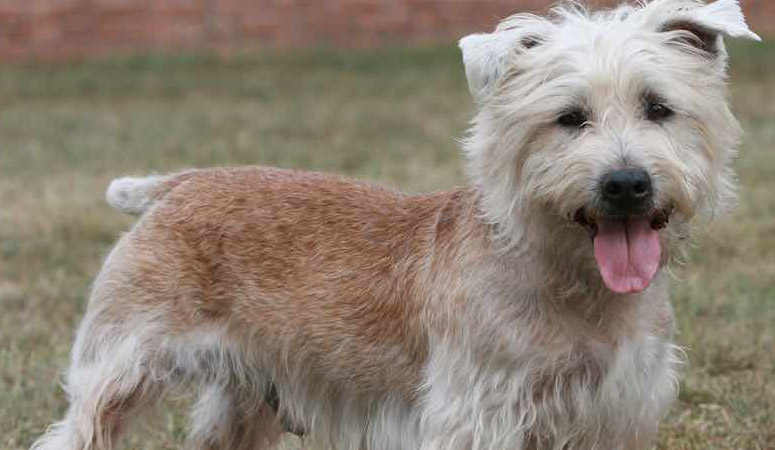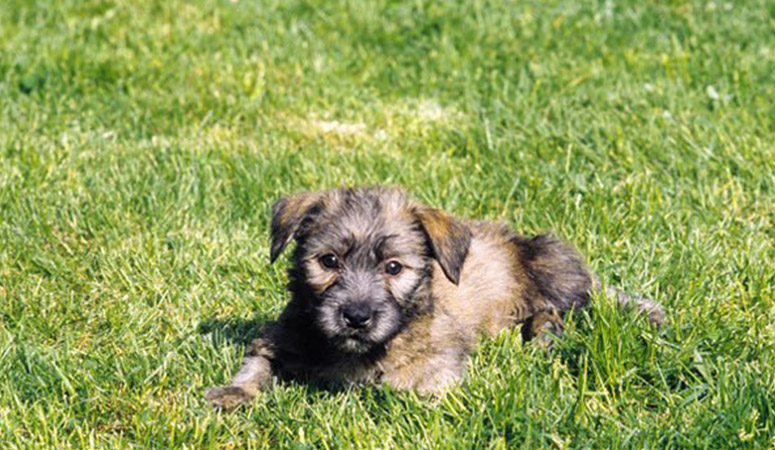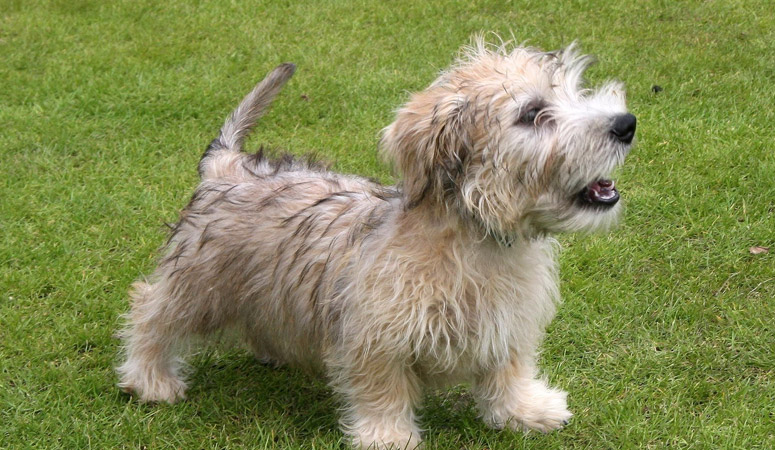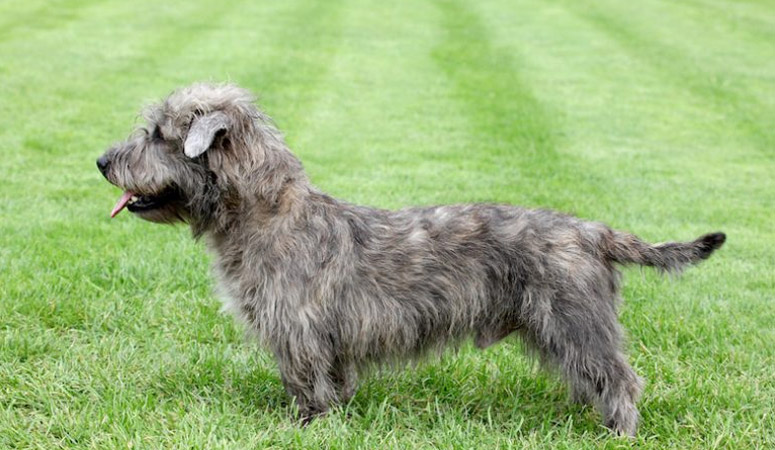Glen of Imaal Terrier
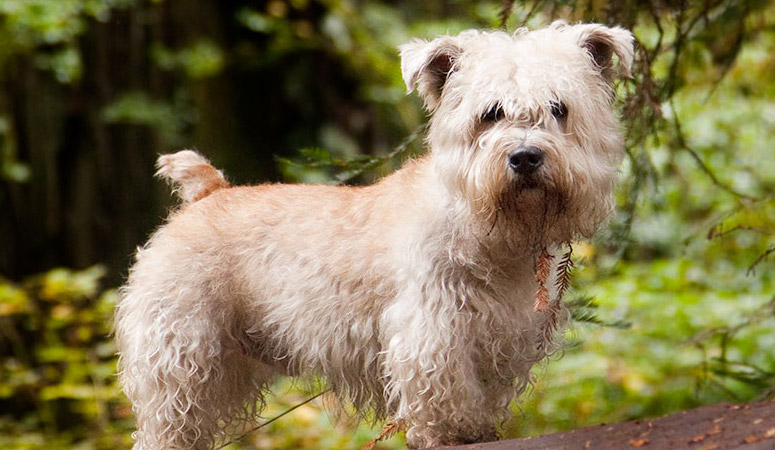
The Glen of Imaal Terrier is independent and strong with a medium-sized built. As skilled and cunning hunter, they were bred to hunt fox and badger, and to protect homes from rodents. Their well-muscled loin, rising topline, strong rear and short, bowed front legs can help them finish some hard work. Gentle and loyal to their people, they’re also affectionate family dogs.
| Other Names | Irish Glenn of Imaal Terrier, Wicklow Terrier |
| Color | Blue Brindle, Wheaten |
| Height | Males: 12.5-14 inches, Females: 12.5-14 inches. |
| Weight | Males: 32-40 pounds, Females: 32-40 pounds. |
| Life Span | 10-15 years |
| Personality | Gentle, Spirited, Bold |
| Exercise | Regular Exercise |
| Origin |
| Popularity | #168 |
| Groom Needs | 2-3 Times a Week Brushing |
| Kids Friendly | Yes with supervision |
| Dog Friendly | Yes with supervision |
| Watch Dog | |
| Family Dog | |
| Litter Size | 3-5 puppies |
Glen of Imaal Terrier Pictures
Glen of Imaal Terrier Video
Introduction
The Glen of Imaal Terrier, fondly called the Glen, is the typical definition of a big dog with short legs. It is sturdily built, balanced, with a topline that approaches the tail, a broad head, and well-muscled shoulders. They are active and dogged, without being ill-tempered or easily provoked. They make good watchdogs, watch with their keen minds and attentiveness. A noteworthy hallmark of the breed is the unique posture of sitting on their hind region, called the Glen sit. Glens have a unique double coat, the top of which is wiry over a soft undercoat. They come in varying shades of wheaten or blue, or sometimes grizzle (a mixture of blue and wheaten).
Glens are medium-sized dogs, standing 12-14 inches at the withers, and weighing around 30-40 pounds, both sex varieties inclusive. They are classified under the Terrier Group by the AKC. Glen of Imaal Terriers live to 10-14 years on the average.
Living with Glen of Imaal Terrier
Grooming is easy for the Glen. This isn’t a fussy breed, and there’s no need to make too much fuss over his coat.
Brush the coat once or twice a week to prevent matting of the furnishings and keep the coat from tangling. Bathe every three months or so — or whenever he’s rolled in something smelly — keeps it clean.
Show Glens aren’t trimmed with clippers, like other breeds, but stripped — the coat is thinned and shortened with a sharp, comb-like tool called a stripping knife. Stripping helps Glens maintain the coarse coat that show judges like to see in terriers.
Trim nails once or twice a month if your dog doesn’t wear them down naturally. Short, neatly trimmed nails keep the feet in good condition and prevent your legs from getting scratched when your Glen enthusiastically jumps up to greet you. Handle his paws frequently — dogs are touchy about their feet — and look inside his mouth.
Brush your Glen’s teeth at least two or three times a week to remove tartar buildup and the bacteria that lurk inside it. Daily brushing is even better if you want to prevent gum disease and bad breath.
His ears should be checked weekly for redness or a bad odor, which can indicate an infection. And wipe them out with a cotton ball dampened with gentle, pH-balanced ear cleaner to help prevent infections. And don’t insert anything into the ear canal.
Eyes should be clear, with no redness or discharge. Your careful weekly exam will help you spot potential health problems early.
Begin accustoming your Glen to being brushed and examined when he’s a puppy. Make grooming a positive experience filled with praise and rewards, and you’ll lay the groundwork for easy veterinary exams and other handling when he’s an adult.
The Glen of Imaal Terrier is a pretty high energy, intelligent dog and as such they need to be given the right amount of daily exercise and mental stimulation for them to be truly happy well-rounded dogs.
They need 30 or 40 minutes a day with as much of the lead time as possible, but only in safe and secure environments. If they are not given the right amount of mental stimulation and exercise every day, a Glen would quickly get bored and could even begin to show some destructive behaviors around the home which is their way of relieving any stress they are feeling and not necessarily because they are being naughty.
Let him run around the house or a fenced yard, perhaps chasing a toy or ball. He will flop down for a rest when he has had enough.
Glens give themselves plenty of exercise too, playing and romping around the house. The breed can be just as happy in an apartment as in a home with a large yard.
Glen puppies should not be over exercised because their joints and bones are still growing. You should not let a dog jump up and down from furniture or going up or down the stairs, which will increase pressure on their joints and spines, and lead to some serious problems later in their lives.
The Glen of Imaal Terrier should be fed a high-quality dog food, which is appropriate to the dog’s age and activity level.
The quality of dog food you buy also makes a difference–the better the dog food, the further it will go toward nourishing your dog and the less of it you’ll need to shake into your dog’s bowl.
Some dogs are prone to getting overweight, so watch your dog’s calorie consumption and weight level to keep your Glen in good shape. Treats can be an important aid in training, but giving too many can cause obesity, which can shorten a dog’s life by several years so it’s important to keep an eye on their waistline from the word go.
Clean, fresh water should always be available.
Learn about which human foods are safe for dogs, and which are not. Check with your vet or the dog’s breeder if you have any questions or concerns about your dog’s weight or diet.
Glens are generally healthy, but like all breeds, they’re prone to certain health conditions, such as progressive retinal atrophy (PRA), hip dysplasia and eye disease such as cone-rod dystrophy.
Not all Glens will get any or all of these diseases, but it’s important to be aware of them if you’re considering this breed.
Special attention should be paid to avoid unnecessary stress on the front legs during their first nine months of life.
As with all breeds, Glen’s ears should be checked regularly for signs of infection, and the teeth should be brushed often, using a toothpaste designed for dogs.
There are several health tests considerations specific to the breed, such as hip evaluation, elbow evaluation, ophthalmologist evaluation and PRA optigen DNA test.
Responsible breeders test all breeding stock for conditions that can affect the breed. Regular visits to the vet for checkups and parasite control help to ensure the dog a long, healthy life.
Total Annual Cost: $2889
Cost is estimated for the first year and may vary depending on many factors, such as dog food, health care, leash, collar, licensing, possible fencing, crates, training and obedience classes, dog-walking, grooming, treats, toys, flea, tick, and heart-worm meds, microchips, etc.
Glens are versatile, trainable, and very smart. They love people but normally won’t get chummy with other dogs. Like most terriers, they have a great deal of character and learn quickly, which can make training a joy.
They may get bored with repetition. When bored, he’ll show his stubborn streak by ignoring you, playing around, or wandering off to sniff his surroundings.
Positive reinforcement is the key. Keep training sessions short: Five minutes of training two or three times a day is much better than one 30-minute session.
Early socialization and puppy training classes are recommended.
The Glen is not an overly noisy breed, but if you accidentally encourage him, he’ll bark and bark and bark. These dogs need to be raised to understand that other dogs are not a threat and that strangers are not, either. Don’t ever run over to see what the fuss is about when he barks — you’ll teach him that if he makes a ruckus, he’ll get the attention of his favorite person. Teaching a “Quiet” command as part of his basic canine manners is a good idea.
As a dwarf breed with slightly curved front legs, Glens should not be rushed into strenuous exercise such as long walks on leash—it’s good to start leash training. A small handful of the pup’s regular kibble can be used to reward him for staying close while on leash.
History
The Glen of Imaal Terrier is one of the four Irish terrier breeds. It is named for Glen of Imaal, in County Wicklow, where it originated. They are believed to have developed around the era of Queen Elizabeth I. There was hysteria in Ireland at the time, and the Queen had to hire Hessian and French mercenaries to quell the crisis. After the conflict had been resolved, the mercenaries settled in the region of Glen of Imaal, with their hound dogs which they had brought from their homeland. These dogs were later cross-bred to local terriers of the region, resulting in a distinct breed that came to be known as the Glen of Imaal Terrier.
The Glen of Imaal Terrier was bred to hunt rats, foxes, otters, and badgers. One remarkable feature of this breed is their natural tendency to advance into their quarry’s lair without the usual barking that goes with other dogs. Glens are quiet, almost to a fault. In hunting championships, a sounding or barking Glen is usually disqualified.
The Glen of Imaal Terrier, being the rarest of all Irish terrier breeds, struggled with extinction for a good part of its history. Although rescued by early 20th century breeders, it still grapples to remain relevant in numbers to date. The Kennel Club of England declared it a vulnerable native breed. The Glen gained an Irish Kennel Club recognition in 1934 before other kennel clubs followed suit. Although records claim that the Glen of Imaal Terrier had entered the U.S since the 1930s, it only became quite popular in the 1980s. A breed club, the Glen of Imaal Terrier Club of America, was founded in 1986. The breed was officially recognized by the American Kennel Club (AKC) in 2004.
Helpful Information
Breed Club: GLEN OF IMAAL TERRIER CLUB OF AMERICA
Breed Club Link: http://www.glens.org/
Breed Club Rescue:

